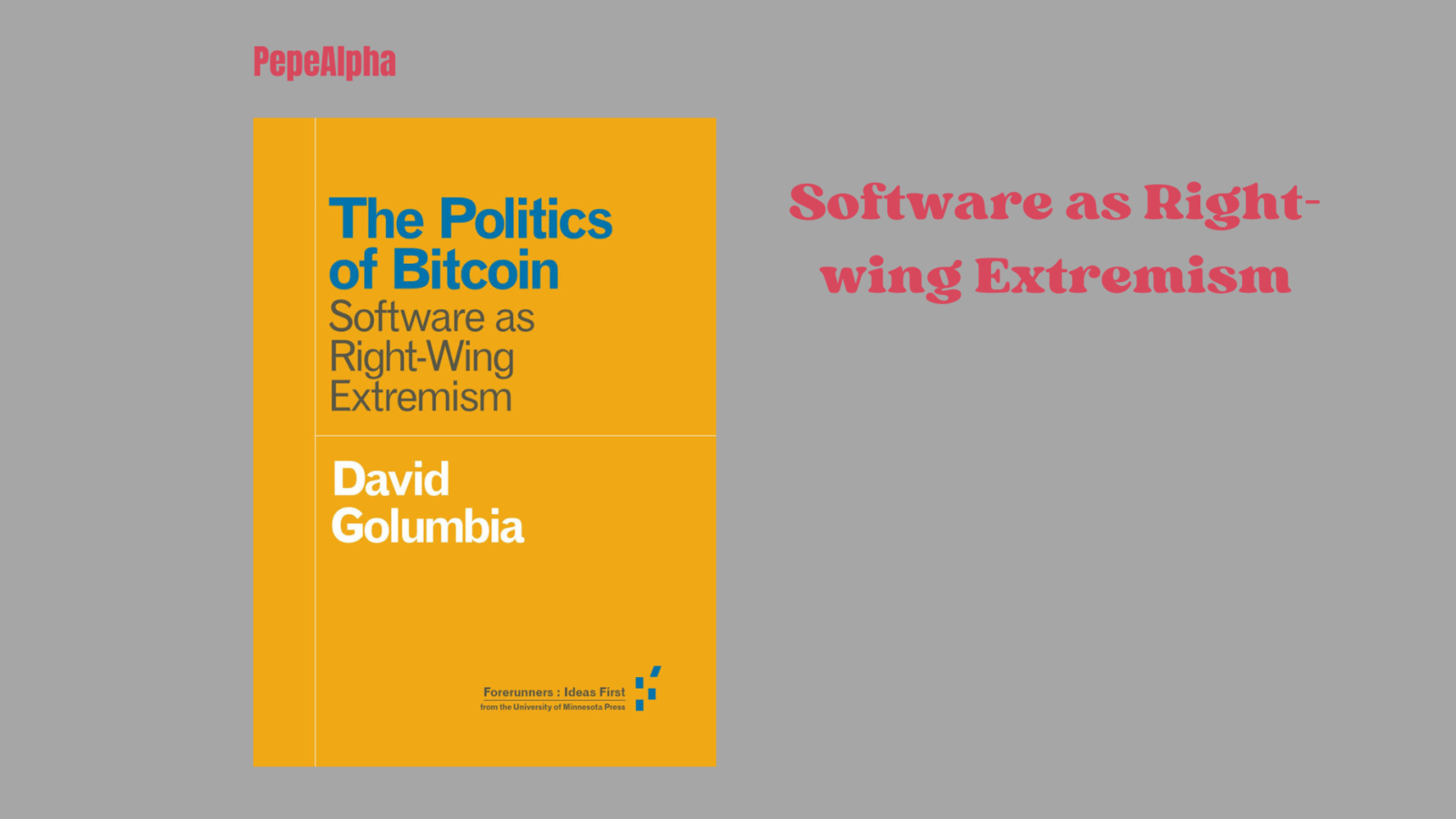Ribbit! Gather ’round, my fellow thinkers and crypto enthusiasts, for a riveting exploration into the murky waters of Bitcoin politics. David Golumbia’s “The Politics of Bitcoin: Software as Right-Wing Extremism” is a thought-provoking dive into the tangled web of ideology and technology that underpins the world of cryptocurrency.
Published in 2016, this slim volume packs a punch, challenging conventional wisdom about Bitcoin and its purported revolutionary potential. Golumbia pulls back the curtain on the cyberlibertarian ideology that often lurks beneath the surface of Bitcoin discourse, revealing its surprising connections to far-right political thought.
At the heart of Golumbia’s thesis lies the notion that Bitcoin’s rise is not just a technological phenomenon, but a deeply political one. Drawing on a diverse array of sources, from the writings of Milton Friedman to the musings of Federal Reserve conspiracy theorists, Golumbia paints a picture of Bitcoin as a tool wielded by those who seek to dismantle the traditional structures of governance and finance.
But what exactly is cyberlibertarianism, and how does it manifest in the world of Bitcoin? At its core, cyberlibertarianism espouses the belief that technology can emancipate individuals from the constraints of government and centralized authority. Bitcoin, with its decentralized architecture and pseudonymous transactions, is seen as the embodiment of this ideology.
However, Golumbia argues that beneath the veneer of technological utopianism lies a darker undercurrent of right-wing extremism. He traces Bitcoin’s ideological roots back to thinkers like Friedrich Hayek and Ludwig von Mises, who championed free-market capitalism and limited government intervention. By aligning itself with these ideas, Golumbia contends, Bitcoin inadvertently becomes a vehicle for promoting far-right political agendas.
But what implications does this have for the future of Bitcoin and cryptocurrency? Golumbia’s analysis forces us to confront uncomfortable truths about the ideological underpinnings of the digital currency movement. While Bitcoin may promise liberation from traditional financial systems, it also carries with it the potential to reinforce existing power structures and inequalities.
As we navigate the choppy waters of “The Politics of Bitcoin,” let us heed Golumbia’s warning: technology is never neutral, and the ideologies that shape it can have far-reaching consequences. Whether you’re a seasoned Bitcoin enthusiast or a curious bystander, this book offers a fascinating glimpse into the intersection of politics, ideology, and technology in the digital age. Ribbit! 🐸















Leave a Reply